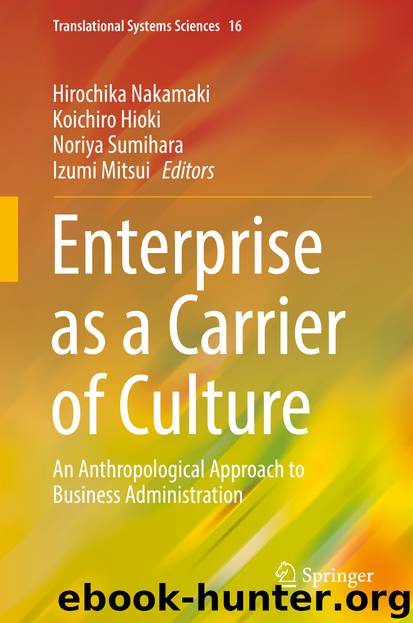Enterprise as a Carrier of Culture by Hirochika Nakamaki & Koichiro Hioki & Noriya Sumihara & Izumi Mitsui

Author:Hirochika Nakamaki & Koichiro Hioki & Noriya Sumihara & Izumi Mitsui
Language: eng
Format: epub
ISBN: 9789811371936
Publisher: Springer Singapore
5.5.2 The Process of Identification as Family Porcelain
As Kopytoff argues, family porcelain also has its own social biography. Writing the biography of object is an investigation not of the identity of the object but of social relations. According to the results of my research shown in Tables 5.2, 5.3, 5.4 and 5.5 and Tables 5.7, 5.8 and 5.9, people are given porcelain for their 21st birthday, as an engagement or wedding present, on retirement and on the death of relatives. The birth of family porcelain is thus often related to family rituals or ceremonies. It may include tea sets, cups and saucers, dinner services, plates and figurines. Some informants purchased royal commemorative mugs and plates or Staffordshire figurines themselves in order to make their own collections, and some purchased new dinner services to hand down to their children in the future. This is also a way of beginning a collection of family porcelain.
Family porcelain continues its existence for several generations within one family. Although McCracken claims that each family is free to choose its consumer goods and that items like plates rarely survive for three generations nowadays, there were quite a number of items of family porcelain in this case study which were described as being passed on from grandparents. Family porcelain has participated in important rituals in the past of the family and also concerns the present owner’s household. A tea set, for example, given to PT, a 68-year-old woman, by her grandmother (Table 5.2), was originally given to PT’s grandmother as her wedding present over 100 years ago. It is now on display in a glass cabinet and was used for PT’s grandchildren’s christening by PT. This shows that the tea set has survived for at least three generations and has links with five generations in the family.
At the end of its life, unless it is broken, lost or stolen, family porcelain is sold into antique markets as a “terminal commodity” or is again given to another person who is not a member of the family. Then, it may or may not have an afterlife as family porcelain in a different family.
Download
This site does not store any files on its server. We only index and link to content provided by other sites. Please contact the content providers to delete copyright contents if any and email us, we'll remove relevant links or contents immediately.
Tools of Titans by Timothy Ferriss(8157)
Change Your Questions, Change Your Life by Marilee Adams(7566)
Deep Work by Cal Newport(6818)
Man-made Catastrophes and Risk Information Concealment by Dmitry Chernov & Didier Sornette(5878)
Playing to Win_ How Strategy Really Works by A.G. Lafley & Roger L. Martin(5774)
Digital Minimalism by Cal Newport;(5588)
Big Magic: Creative Living Beyond Fear by Elizabeth Gilbert(5556)
The Slight Edge by Jeff Olson(5315)
Ego Is the Enemy by Ryan Holiday(5228)
The Motivation Myth by Jeff Haden(5125)
Stone's Rules by Roger Stone(4989)
The Laws of Human Nature by Robert Greene(4926)
Tuesdays with Morrie by Mitch Albom(4599)
Eat That Frog! by Brian Tracy(4381)
Rising Strong by Brene Brown(4341)
Skin in the Game by Nassim Nicholas Taleb(4123)
The Money Culture by Michael Lewis(4026)
Bullshit Jobs by David Graeber(3993)
Skin in the Game: Hidden Asymmetries in Daily Life by Nassim Nicholas Taleb(3868)
